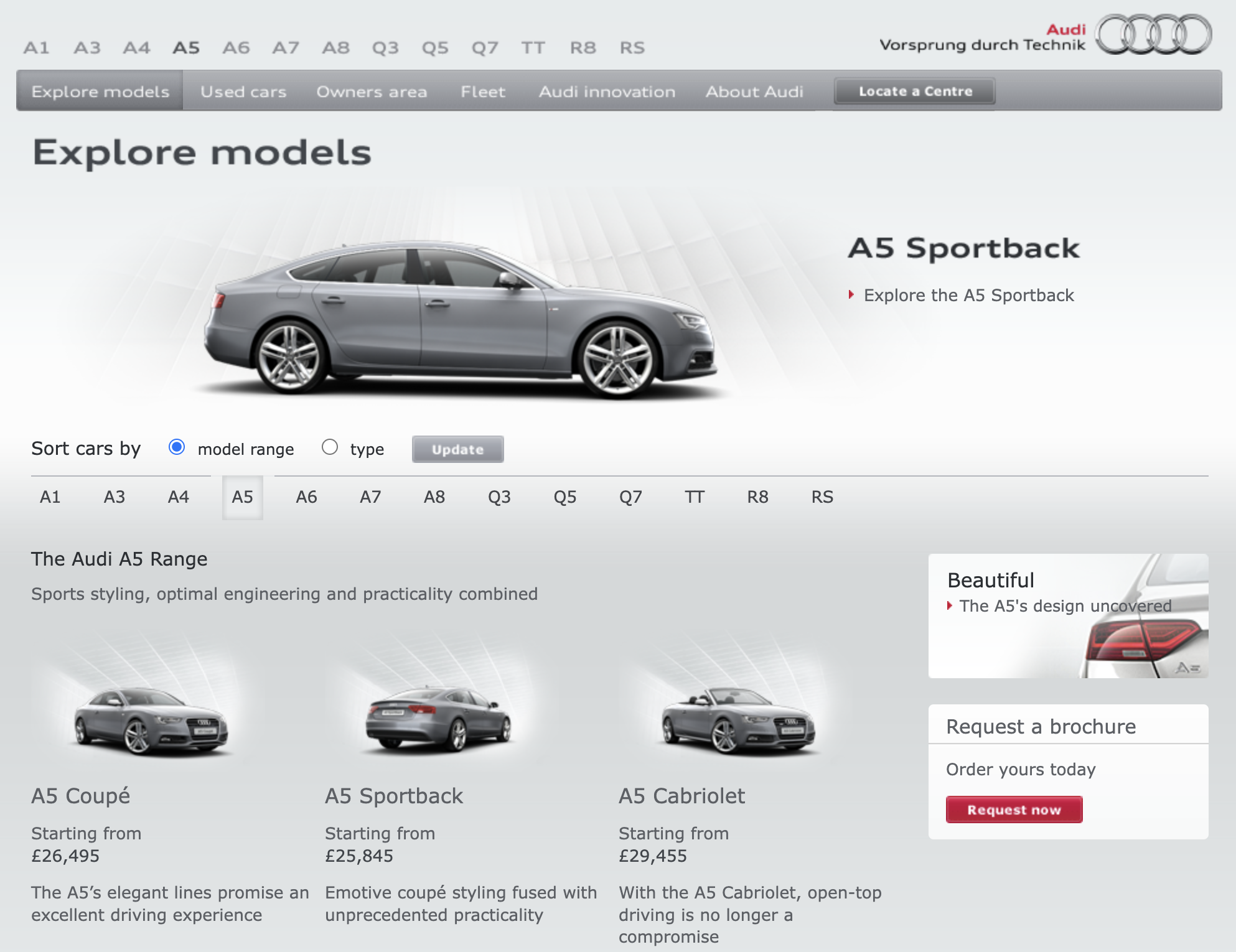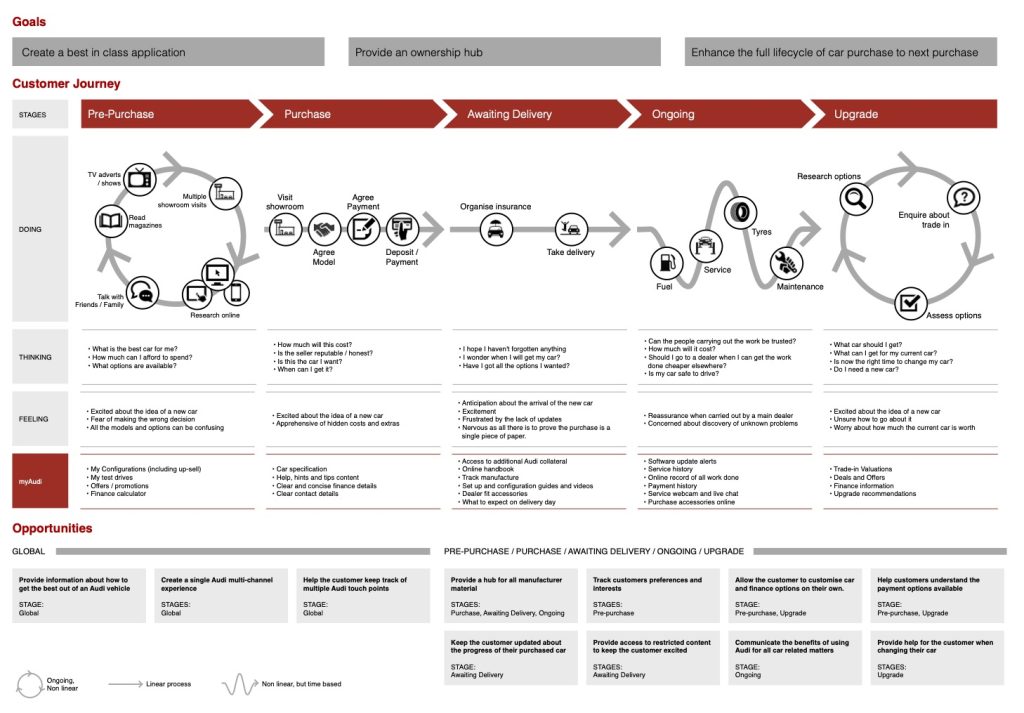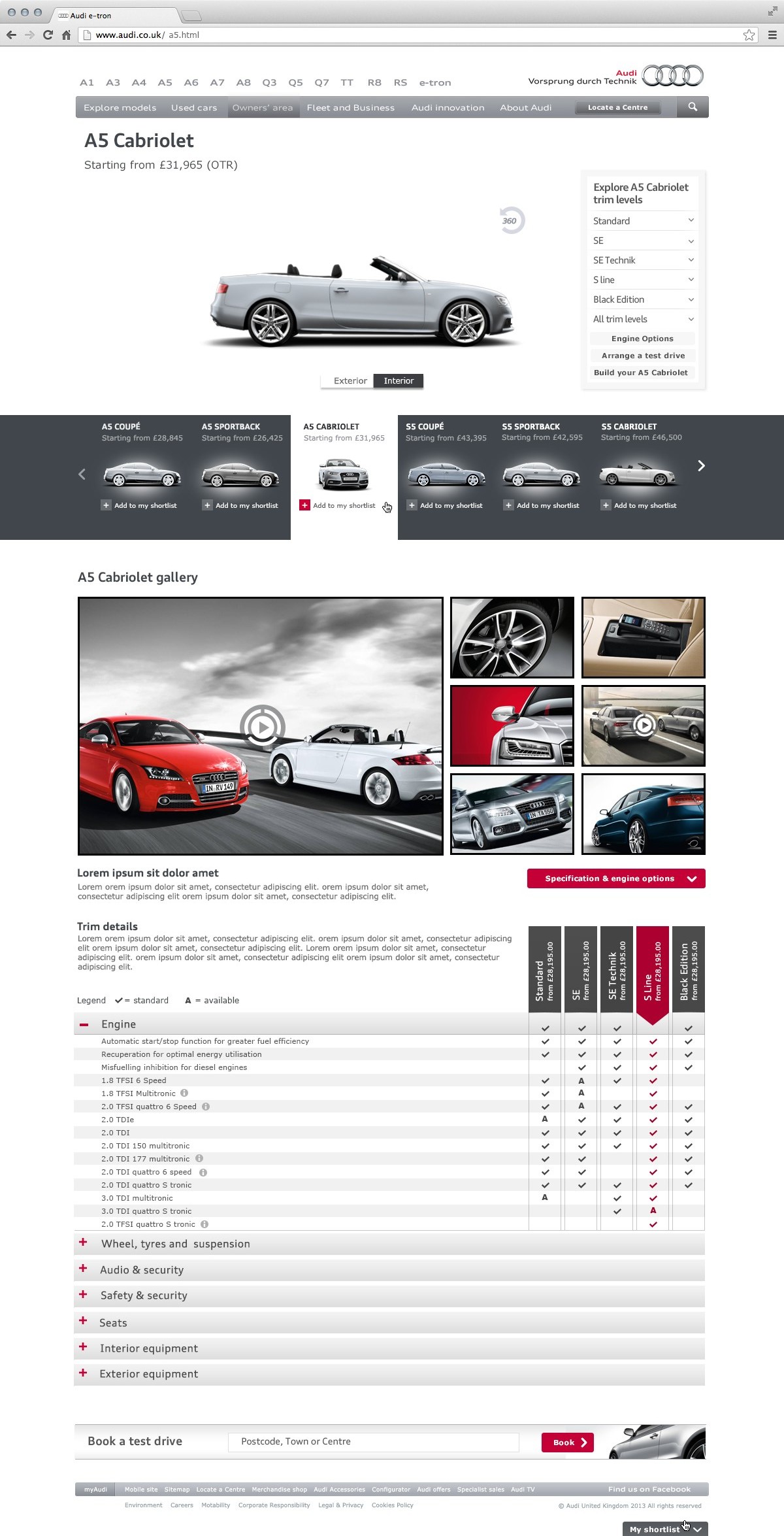
Audi is known for engineering excellence, but its digital presence told a different story. While competitors like BMW and Mercedes had invested heavily in modern digital experiences, Audi’s website remained stuck in the past. It was difficult to navigate, overloaded with technical jargon, and failed to support customers through the entire ownership journey.
Potential buyers found themselves lost in complex menus, struggling to differentiate between models and trims. Existing customers had no way to track their vehicle post-purchase, leaving them frustrated and disconnected. Meanwhile, dealerships were overwhelmed with basic inquiries that could have been solved digitally, taking time away from higher-value interactions.
It was clear Audi needed more than a simple redesign. This was about rebuilding the digital experience from the ground up, ensuring it was intuitive, user-friendly, and capable of meeting modern customer expectations.
The first step in fixing the digital experience was understanding why it was failing. Customers weren’t just frustrated—they were abandoning the site entirely. Analytics revealed high bounce rates on key decision-making pages, showing that users couldn’t find what they needed.
Many buyers were leaving the Audi website and turning to third-party comparison sites for better explanations. The way trim levels were presented was overloaded with specs and lacked clear, side-by-side comparisons, making it hard for users to see what they were actually getting.
For those who had already purchased a vehicle, the experience was even worse. Unlike other industries where tracking an order is standard, Audi buyers had no way to check on their vehicle’s production or delivery status. This lack of communication led to frustration and repeated calls to dealerships, adding unnecessary pressure on showroom staff.

To fully understand the scope of the problem, we took a research-first approach. This meant studying competitors, analysing user behaviour, and speaking directly to both customers and showroom staff.
Benchmarking against BMW, Mercedes, and other helped identify where Audi was falling behind. While other brands offered interactive comparison tools and dynamic configurators, Audi’s site felt rigid and unintuitive.
User interviews and usability testing provided direct insights into customer frustrations. Many buyers said they felt overwhelmed by technical jargon, and that key details were hidden in hard-to-find menus. Showroom staff echoed these concerns, explaining that many of their daily inquiries could have been solved with a better digital experience.

With clear insights from research, the next step was designing a seamless, user-friendly experience that put customer needs first.
The website’s entire information architecture was restructured, making it simpler and easier to navigate. Instead of forcing users to sift through dense technical specifications, we introduced clear, visual model and trim comparisons, making it effortless to see the differences at a glance.
To reduce post-purchase frustration, we developed MyAudi, a customer portal where buyers could track their vehicle’s progress from production to delivery. MyAudi also allowed users to manage their vehicle, view service history, and receive personalised recommendations for accessories and services.
Every design decision was validated through A/B testing and usability testing, ensuring that the changes truly improved the user experience.
The impact of the redesign was immediate and measurable. Customers were engaging more deeply with content, spending more time on the site, and completing key tasks more efficiently.
The new model comparison pages reduced confusion, leading to fewer showroom inquiries about trim levels. The introduction of MyAudi meant that post-purchase tracking dramatically reduced calls to dealerships, freeing up staff to focus on sales rather than answering repetitive questions.

This project reinforced key principles that apply to any large-scale digital transformation.
If you’re looking to transform your digital experience and create a smarter, more intuitive platform for your customers, let’s chat.